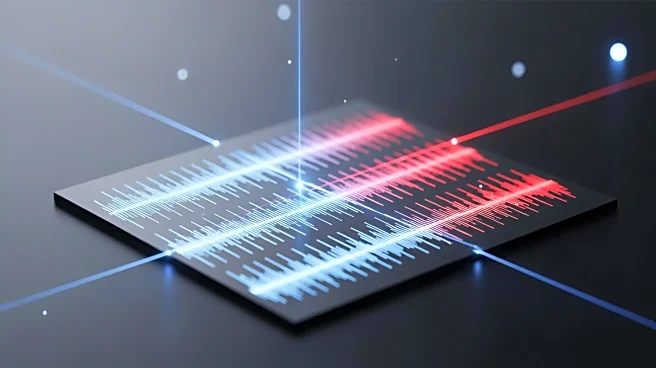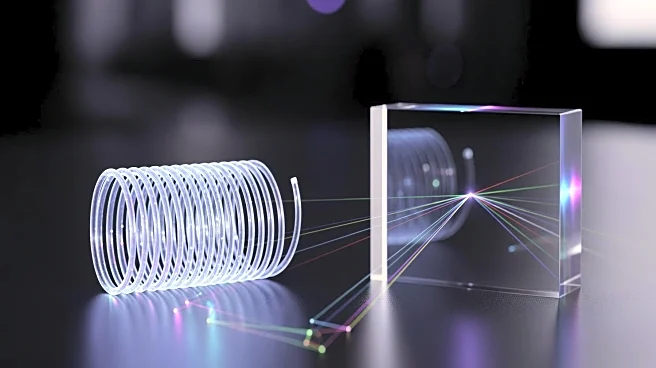What's Happening?
Researchers at the Joint Quantum Institute (JQI) have successfully designed and tested new photonic chips capable of converting a single color of laser light into multiple colors without active inputs
or optimization. These chips utilize an array of resonators that allow light to circulate extensively, enabling the conversion of light frequencies. This development addresses a longstanding challenge in photonics, where creating compact light sources on chips has been difficult due to the need for precise frequency-phase matching conditions. The new chips can generate second, third, and fourth harmonics, effectively producing red, green, and blue light from a standard telecommunications frequency. This breakthrough was published in the journal Science on November 6, 2025.
Why It's Important?
The ability to convert laser light into multiple colors on a chip has significant implications for various fields, including quantum computing and precision measurement. By eliminating the need for active tuning and precise engineering, these photonic chips simplify the integration of light sources into existing hardware, potentially reducing costs and increasing efficiency in industries reliant on photonics. This advancement could enhance metrology, frequency conversion, and nonlinear optical computing, offering new opportunities for innovation in technology and science.
What's Next?
The researchers plan to explore further applications of their photonic chips in integrated photonics, particularly in areas requiring high precision and reliability. The passive nature of these chips suggests they could be mass-produced without the complications of active compensation, making them more accessible for commercial and scientific use. Future research may focus on expanding the range of frequencies these chips can generate and improving their efficiency in various applications.
Beyond the Headlines
This development in photonic chips highlights the potential for passive solutions in overcoming complex engineering challenges. The use of multi-timescale resonator arrays could inspire new designs in photonics, emphasizing the importance of structural innovation over active intervention. This approach may lead to more sustainable and scalable technologies in the future.











